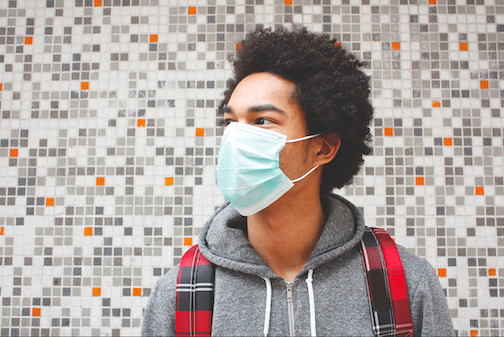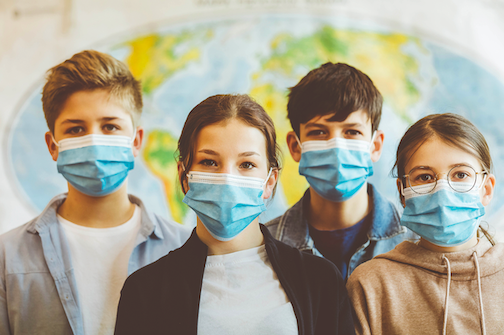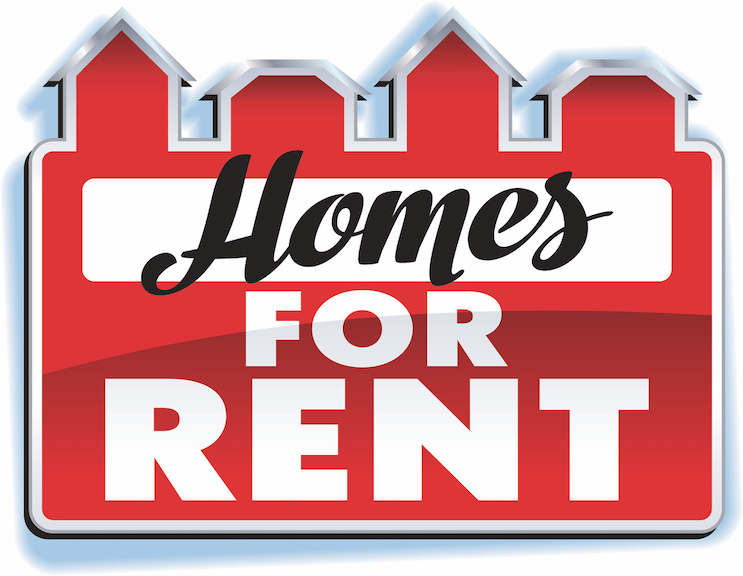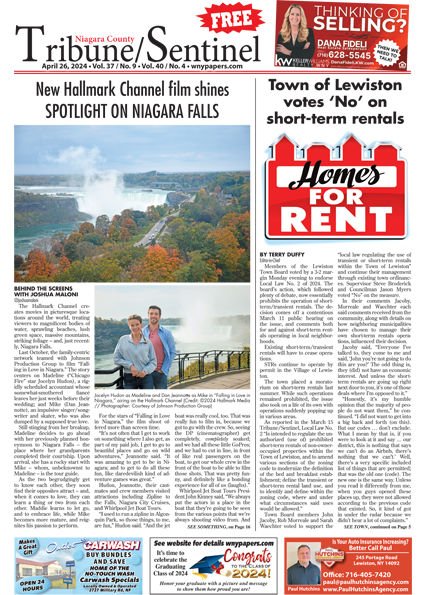Featured News - Current News - Archived News - News Categories
Governor establishes preopening perimeters
By Joshua Maloni
GM/Managing Editor
Gov. Andrew Cuomo on Friday gave each New York school district the go-ahead to reopen for in-person learning.
Speaking to the press, he said, “By our infection rates, all school districts can open, everywhere in the state; every region is below the threshold that we established, which is just great news. And look, let me say it this way: You look at our infection rate; we are probably in the best situation in the country right now. As incredible as that is. So, if anybody can open schools, we can open schools. And that's true for every region in the state. Period.”
School districts were required to submit reopening plans by the end of July.
“The Department of Health has the plans. And if they don't meet (state safety protocols), Department of Health can disapprove plans – if they’re not responsible from a health point of view,” Cuomo said.
In the meantime, “They are all authorized to open,” Cuomo reiterated. “Again, we’re going to watch the infection rate between now and the day that schools open. If there's a spike in the infection rate, if there’s a matter of concern in the infection rate, then we can revisit it. But for planning purposes, they can reopen.
“They then go to step two, which is the local school district has to come up with a plan. And they have to deal with their parents and teachers, which is going to be a more complicated issue than I think many of them fully appreciate. I have been deluged with calls from parents and teachers. And there is a significant level of anxiety and concern. And I've said a number of times, these school districts have to be talking to the parents and talking to the teachers, because if the teachers don't come back then you can't really open schools; if the parents don't send their students, then you're not really opening the schools.
“So, to facilitate that, I want school districts to do two things. One, I know where the bulk of the questions are coming from. The set of questions that I have from a policy matter is remote learning and the equity in the remote learning process. We've learned from the experiences we've had during COVID that remote learning can be quite unequal, given the demographics and given the circumstances. So, I'm going to ask the school districts to post their remote learning plan on how they're going to do remote learning – to the extent they are, if they are, in their district.
“Also there's been a lot of questions about testing. Most of the plans will say a student comes in, temperature check, and if the student has a temperature they have to be tested. What does that mean? How is the student tested? Where is the student tested? If there are 20 students who have a temperature on day one, how do you get those students tested? Where do you get them tested? What happens in the interim? Teachers also want to know how a teacher can get a test. And how would that be done.
“Different school districts have different theories, but that question of testing for students and teachers is a high level of concern. To facilitate that dialogue, I want the school districts to post their quote-unquote ‘testing plan’ for their school district. So, whenever they talk about testing, how will you do that? That’s what the parents want to know. How quickly will it be done, etc. So that's a second component of the plan that should be posted on the website.
“And the third, the questions around contact tracing in a school. So, if a student tests positive in a class – tests positive, so the student came in, student had a fever, student then got tested – what is the contact tracing for that positive? Do you test the class? If the student goes to a number of classes, how do you do it? How will the school do contact tracing? Will the school ask the local government to do it? Will a school ask the local health department to do it?
“But these three areas are the highly questioned areas almost across all school districts: remote learning, how do you do testing, how do you do contact tracing. I want the school districts to do just that component of their plan that they then post. So, a parent who has questions on one of those three areas, they can go right to those three specific answers, rather than wading through the entire district’s plan. Because … those plans are quite lengthy. So, I’m asking the school district to post those three components.
“Second, I'm asking all the school districts to have discussions with the parents. There should be at least three discussion sessions with parents, where the parents have been given notice. It can be online or wherever it works for the local school district; but they have to communicate with the parents and explain the plan and answer the questions of the parents. Not every parent can make any one day. So, the school district should have three opportunities between now and Aug. 21. And they publicize them and they say here are the three days, and parents can participate online, however they do it. But, parents need an opportunity to be heard, and the schools should welcome the opportunity to actually explain the plan.”
He added, “I’m also asking the school districts to set up at least one discussion just with the teachers; where they go through the plan and everybody is, in one conversation – teachers, administrators – and they discuss exactly what is in the plan. And if the teachers have questions or concerns, let’s get them aired and let’s get them at a point where everybody’s hearing the same thing.”

Cuomo called this decision to reopen “good news.”
“Again, we have the best infection situation in the country. If any state can do it, this state can do it, because we've been smart from day one. We do the masks, we do the social distancing, we’ve kept that infection rate down. And we can bring the same level of intelligence to the school reopening that we brought to the economic reopening.
“Our school guidance has been touted as the smartest in the country. Our economic reopening guidance was the smartest in the country. So, if anyone can do it, we can do it. But we have been successful, because we've been smart – and we have to continue to be smart.
“And with the school districts, I want those two tasks performed: One, specific plan by school districts online by the end of next week. ‘Here's our testing plan; here’s our contact tracing plan; here’s our remote learning plan,’ as they define it in their local reopening plan.' So, ‘Here's, when we say if a student tests positive, this is how we do testing. When we say a teacher can get testing when they want it, this is how we do it. If a student becomes positive, if a teacher becomes positive, this is how we do contact tracing. The way we do remote learning,’ if they do remote learning, ‘This is how we do it – and this is specifically how we're going to address the equity issues that we encountered the first time.’
“So those three plans, which are components of the overall plan, online, posted, people can read them.”
Can Individual School Districts Delay Opening?
Cuomo said it’s up to each individual school district to determine when to open classroom doors.
“We're giving flexibility to school districts,” he said. “Like the phased economic reopening, there was no one-size-fits-all. Regions were in different circumstances. And we did have different timing for different regions, if you remember. The same is more true with school districts. There's 750 of them, so the geographic footprint is even more refined.
“And if (what is) their plan on remote learning; their plan of in school; their plan of hybrid – how long do they close their school district if they get a positive; how many positives; what is their schedule – that we leave to them.”
Personal Protective Equipment and Social Distancing
SUNY Empire State College President Jim Malatras, who joined Cuomo on the conference calls, said, “The rule is that you must wear a mask at all times when social distancing cannot take place or occur. So, you have to have a mask with you at all times. And if families or a student does not have a mask, the school district must provide a mask. And we strongly recommend that mask wearing happens, with (Department of Health) guidelines, even through the course of instruction and other activities in the school day, to ensure the maximum level of health compliance. And that’s the DOH guidelines.”
What About Asymptomatic Students?
Cuomo was asked what school districts should do with students who are not showing any signs of the coronavirus.
“That is the question – that is one of the top five questions that I'm asked – and that's what they're going to ask the local school districts,” Cuomo said. “Some school districts have a better answer than other districts, by the way, right? And remember, it's up to the local district to come up with a specific plan. But that is a very big question. In other words, you have some school districts who primarily talk about temperature taking. Yeah. Temperature taking. And if a kid has a temperature, then test that child, certainly; but how about the asymptomatic spread? … Nursing homes (had) asymptomatic spread.
“What happens? How do you detect the asymptomatic spread in a school, unless you're doing testing? Because if you're not doing testing, the only way you detect asymptomatic spread is when somebody gets sick.
“But that is a very good question. And that's a question that the local school districts are going to be asked – I can tell you that – from both the parents and the teachers. The answer is testing. But then the question becomes, ‘OK, what percentage of testing? Who's going to do the testing? Do you have that set up?’ But that is a conversation.”

Fall High School Sports, School Cafeterias and Outdoor Learning
Malatras said, “Right now, there is no interscholastic sports approved yet.”
He said, “It's something that's going to be ongoing discussions.”
Cuomo added, “I spoke to some school districts that want to have students come in and leave before lunch, just because they don't want the lunch situation without a mask. They think the meals are one of the most difficult things to do. Because that's basically, you know, indoor dining, if you want to look at it through that lens. But … that's a school district by school district (decision), subject to the statewide guidance.”
Restaurants and some gyms have utilized outdoor spaces. Cuomo was asked his thoughts on taking classes outside.
“I want to be a little guarded in my editorial comment on the plans, because if it works for a district, it works. If it works for the parents, it works. If it works for the teachers, it works.
“Having said that – since I tend to have an opinion about everything – I think the outdoor learning – look, none of this is perfect, right? If I had said to you any of this six months ago, you would have said it's all bizarre. But I think the outdoor learning – you know, you have to deal with the weather to the best you can. But look, it's a lot safer. There's no doubt about that.
“Indoors is what you want to avoid. And as maybe different as outdoor learning sounds, I think it makes sense – to the extent you can do it.”
Testing
Almost a month ago, Cuomo announced new, data-driven guidance for reopening schools in New York. Schools in a phase four region can reopen if the daily coronavirus infection rate remains below 5% or lower using a 14-day average.
Schools will close – or go back to remote learning – if the regional infection rate rises above 9%, using a seven-day rolling average, after Aug. 1.
On Friday, Cuomo said, “Department of Health guidance did reference testing. But where testing is coming up is from the local school districts’ plans. Because the local school districts' plans bring up testing. If you look at the plans, most of them will say, ‘We're going to do this, this, this, this, and then we're going to take a temperature of a student. And if the student has a temperature, then they go into the isolation room.’ That then triggers (the question) about asymptomatic spread. The student never had a temperature. Good question. But, student had a temperature, they go into the isolation room. They then get tested.
“ ‘Oh, they get tested. How, where?’ Let's say it's not one student. The school has 1,000 students. How many students in a morning will have a temperature, if you have 1,000 students? Let's take a guess. Fifty? Twenty-five? OK, those students go into an isolation room. And then they have to get tested. How do we test those students? Does the parent have to test them? Do they get tested at school? Do you need the parent’s permission to test them? Do you call up the city to test them? How do you test those students?
“These are questions coming up in the plan themselves. And most plans reference testing. And that's where it came from.”
Malatras added, “The DOH guidance requires, for symptomatic students, that a testing plan be in place for those schools. But on the screening piece of asymptomatic and other students, schools must develop protocols and procedures for mandatory health screening. That could include testing and other things, but it must as a baseline include temperature checks in all plans.
“So, testing has been part of many of the districts' plans on screening side, and it is required on testing of symptomatic students and others within a district.”

What about HIPAA?
A question has been posed by school administrators regarding how to identify a student (or teacher) who tests positive for the coronavirus without violating that individual’s Health Insurance Portability and Accountability Act right of privacy. How can a school or school district quarantine a class without knowing who has the virus?
Malatras said, “This program has to work with the contact tracing program. There's already been several examples of this happening across the state. One recent example in Westchester County, where there was a positive result of a teacher's aide, which resulted in testing of the entire classroom, and then isolation of those students. While you can still protect the student’s name and identification, it can be worked out with the local health department – to the contact tracing program – as well as the subsequent testing, regardless. Like in many other cases, we could still protect student privacy while also conducting testing and other things to keep the classroom safe.”
Cuomo said, “This is the essence of contact tracing all across the board, right? HIPAA isn't just for children; HIPAA is for everyone. And contact tracing is, ‘We can protect your identity and privacy, but we can use the information to protect others.’ ”
To Summarize …
Cuomo said, “Just remember the context here for this conversation, please. The state says, ‘Here's the viral infection rate.’ Thank God, in this state, we can authorize all schools to reopen, given the viral infection rate. It then turns to them and their plan.
“They can do in-person school. But it is up to them. In-person, hybrid, outdoor education, remote education, a blend, half-day, quarter-day, third-day – that is all up to their discretion.
“The main questions that have been asked: contact tracing, separate plan – get it up (online); testing, separate plan, get it up; and remote learning, and how do you fix what we learned from the first (school closing), mandatory, if you will.
“Discussions with parents, at least three … between now and Aug. 21; and at least one session just with teachers, because we need the parents and the teachers.
“Ventilation systems – all these questions, have to be brought up and discussed on a local level.
“But again, it's good news. If any state can do this, we can do this; not just because of our infection rate, but because we've been smarter than any other state, as a people, in dealing with this. And I believe in New Yorkers, and New Yorkers can do it – and New Yorkers will decide what they want to do, and how they want to do it, with school district by school district.”





























